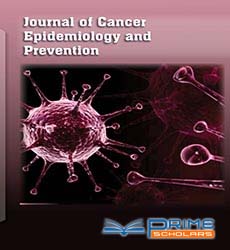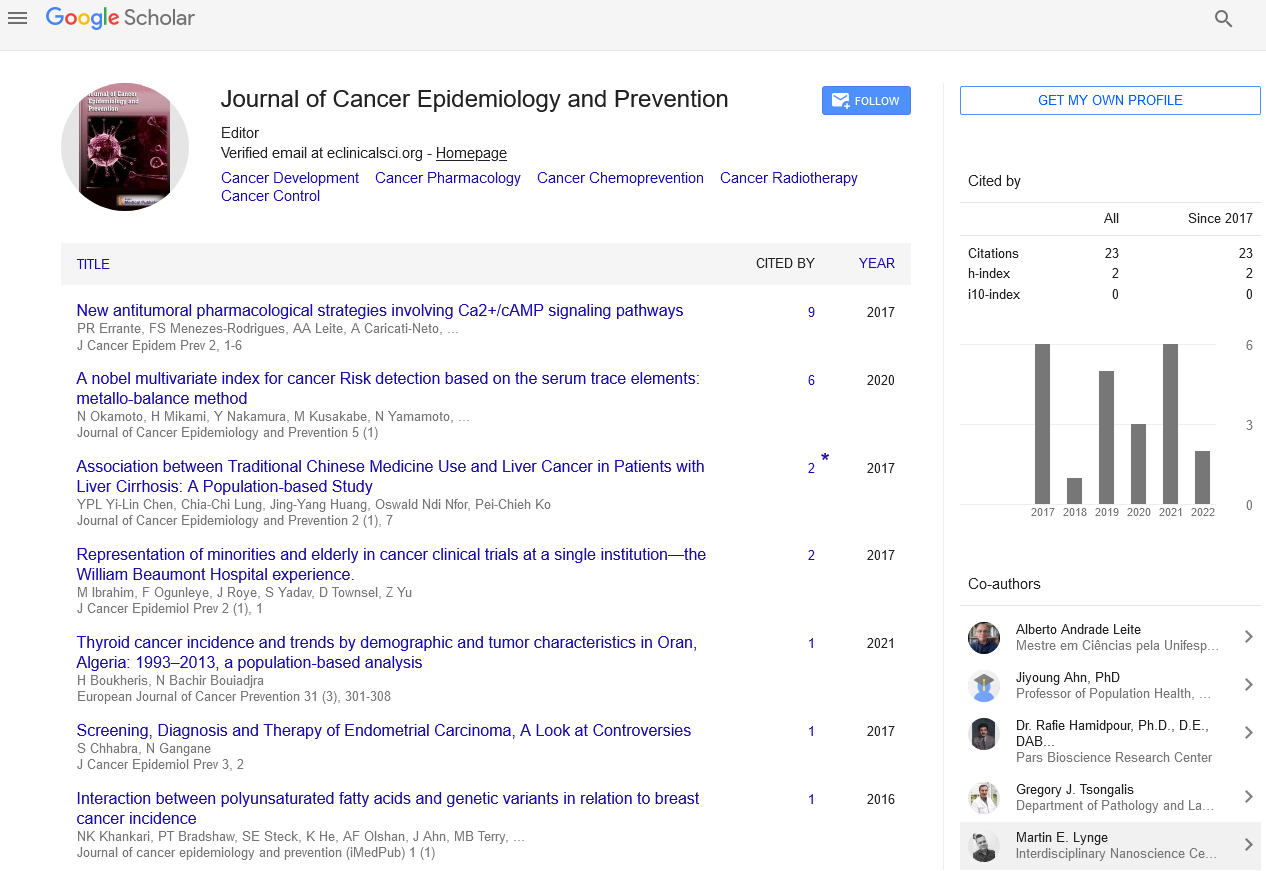Research Article - (2023) Volume 8, Issue 2
Assessment of Dietary Habit Associated with Gallbladder Cancer and Gallbladder Diseases: A Case-control Study
Shailendra Kumar Mishra1,
Shushruta Bhunia2,
Jyotsna Singh3,
Braj Raj Shrivastav4 and
Pramod Kumar Tiwari3*
1Department of Anthropology, University of Allahabad, Allahabad, 211002, India
2Department of Molecular and Human Genetics, Jiwaji University, Madhya Pradesh, 474011, India
3Department of Zoology, Jiwaji University, Madhya Pradesh, India
4Department of Oncology, Cancer Hospital and Research Institute, Madhya Pradesh, 474009, India
*Correspondence:
Pramod Kumar Tiwari, Department of Zoology, Jiwaji University, Madhya Pradesh,
India,
Email:
Received: 22-Jun-2023, Manuscript No. IPJCEP-23-16741;
Editor assigned: 26-Jun-2023, Pre QC No. IPJCEP-23-16741 (PQ);
Reviewed: 10-Jul-2023, QC No. IPJCEP-23-16741;
Revised: 22-Aug-2023, Manuscript No. IPJCEP-23-16741 (R);
Published:
29-Aug-2023, DOI: 10.36648/IPJCEP.8.2.017
Abstract
Gallbladder Cancer (GBC) is an uncommon and aggressive neoplasm of gastrointestinal tract cancers
with infrequent geographic variations and increasing incidence in northern India. The aim of this
investigation was to identify the possible dietary or environmental risk factors associated with GBC
and Gallbladder Diseases (GBD). The authors prepared a questionnaire filled by the patient
mentioning the details of dietary habits, family history and other parameters, likely to be associated
with or being risk factors for GBC and GSD. Details of ultrasonography, CT, FNAC and Histopathological
Examination (HPE) of gallbladder cases (n=103) registered at CHRI hospital, Gwalior were also studied.
Healthy, age and sex matched control subjects (n=50) were recruited. Data were analyzed by using
SigmaPlotv3.5 and GraphPad. Among the protective factors, the consumption of iodized salt, fruits
and dry fruits, while consumption of tobacco, non-filtered cooking oil, non-iodized salt and stale food
appeared as significant risk factors in our study. Thus, increasing the proportion of the protective
dietary items or significantly reducing those which may enhance the risk can effectively reduce the
incidence of GBC and GBD in such endemic areas where they are more common.
Keywords
Gallbladder cancer; Gallbladder disease; Cholecystitis; Risk factor; Protective factor;
Cholelithiasis
Introduction
Gallbladder cancer is a discrete type of biliary tract cancer,
caused due to yet unclear reasons, which is rare, aggressive
and with limited treatment option [1]. A marked geographical
and demographic variation in its incidence is reported [2-4].
Its incidence is found to be high in Chile and Valdivia and
Northern India [5-8]. The highest incidence rates were
reported among females in Delhi, (21.5/100,000), followed by
South Karachi, Pakistan (13.8/100,000) and Quito, Ecuador
(12.9/100,000) [9]. GBC is still considered as an “orphan
cancer”, because of the least known environmental conditions
associated with the disease progression [10]. Among the gallbladder diseases, GBC and Gallstone (GS) are considered as
the foremost type [11]. The typical statement of four Fs’: “Fatfair-
fertile-forty”, for GS and the predominance of GBC arises
a logical question to studying GBC in relation to dietary
pattern [12]. Environmental factors and lifestyle are more
prominent risk factors however multiple factors are linked to
the occurrence of gallbladder cancer [13]. To distinguish the
phenotypic effect of the disease, it is essential to identify the
role of the surroundings. The environment plays an important
role in causing the disease. The dietary habits of Indians vary
among the states and regional areas. North central India has
its own specific dietary pattern and eating habits, which are
likely to be associated with gallbladder cancer. In view of this,
we prepared a questionnaire related to the education, living
conditions, socioeconomic status, dietary aspects, clinical
parameters, etc. of the patients to critically analyze their
association as risk factors for GBC and GBD, if any.
Materials and Methods
Case-control
A total of 103 cases of GBC and GBD (females; n=72 and
males; n=31) admitted at CHRI, Gwalior, were recruited in the
last 2-3 years. The selection criteria of the patient were based
on the record file in the patients’ wardroom. After discussing
with the duty-in-charge doctor, the patients were asked
questions based on the questionnaire. Most of these patients
were from various districts of North-central Madhya Pradesh
and from the adjoining states (Rajasthan and Uttar Pradesh).
Diagnosis of the patients was confirmed by ultrasonography,
CT scan, FNAC and HPE of gallbladder specimens. Control
subjects were healthy, age and gender-matched subjects
(n=50), recruited from the same region and having no past
clinical history of any cancer, stone, diabetes, jaundice,
infection or other gastrointestinal diseases.
Questionnaire
A questionnaire was prepared to collect data on various food
habits, clinical parameters, and other demographic
characteristics. After obtaining well-informed consent from
the patient, the questionnaire was filled enduring face to face
interviews with the patients or their close relatives by the PhD
scholars in the Hindi language for better explanation. The
questionnaire comprised mainly three sections;
• Socio-economic-demographic.
• Dietary patterns and habits.
• Clinicopathological conditions.
Briefly, socioeconomic and demographic details were
recorded for age, gender, district-wise incidence, caste,
education, occupation status, marital status etc. Questions on
dietary patterns and habits included information regarding,
the type and condition of food, source and condition of
drinking water, meal time (breakfast, lunch and dinner) habits
of tobacco chewing, smoking and consuming alcohol. Clinicopathological
information gathered data on clinical symptoms, size and site of the tumour, family history of any illnesses, and
haematological and biochemical details.
Data Analysis
Both univariate and multivariate logistic regression analysis
were applied to calculate Odds Ratio (OR), and Confidence
Interval (CI) at 95% Relative Risk (RR) to assess the risk and
protective parameters. P value was calculated to test the
significance of our data by using SigmaPlot and GraphPad
software. For demographic and socioeconomic aspects,
percentages were calculated. P value less than 5% was
considered to be statistically significant.
Results
Case-control Study of Demographic and Life Styles
Among the total of 103 cases, GBC (n=84), Cholecystitis (CC,
n=07), Gallstone (GS, n=09) and GBC with Gallstone (GBCS,
n=3) and a total of 50 controls were included. The mean age
of cases was 55 ± 1.5 (mean ± SD) years (Table 1). Gwalior and
adjoining districts showed the highest number of cases among
the North-central region. The demographic details of the
subjects are shown in Figures 1 and 2. The gallbladder tumors
at different sites were found at different rates. The Fundus
region possessed the highest number of cases 56.63% (47/83),
followed by the neck 20.48% (17/83), and lumen 9.64% (8/83).
The average tumour size was 1.5 and 1.3 cm in females and
males, respectively (Table 2). Most of the cancer patients were
illiterate (50.49%; 52/103) and belonging to the lower middle
socio-economic group (54.37%; 56/103). The parameters,
smoking 11.637 (CI 1.51-89.688); p<0.0185, RR (Relative Risk)
1.531, tobacco chewing 6.633 (CI 1.887-23.342); p<0.0032,
RR-1.604, non-filtered cooking oil 18.222 (CI 5.396-61.533);
p<0.0001, RR-2.872, non-iodized salt 10.118 (CI 2.894-35.368);
p<0.0003, RR-1.805, stale foods (food that is kept overnight at
room temperature) 8.6 (CI 2.922–25.307); p<0.0001,
RR-3.794, cold food (not frozen but kept at room temperature
for a long time) 10.083 (CI 1.657-61.332); p<0.012, RR-2.397
and alcohol consumption 6.363 (CI 0.789-51.276); p<0.0822,
RR-1.487 were found to be as risk factors for GBD (Table 3).
While the parameters like the use of iodized salt 0.0988 (CI
0.028-0.345); p<0.0003, RR-0.554, fresh fruits 0.0026 (CI
0.0003–0.020); p<0.0001, RR-0.157, dry fruits 0.0378 (CI
0.037-0.132); p<0.0001, RR-0.404, consuming freshly cooked/
warm food 0.0992 (CI 0.0163-0.603); p<0.0121, RR-0.417 and
filtered water 0.0349 (CI 0.01-0.12); p<0.0001, RR-0.1366 and
also, having breakfast 0.479 (CI 0.183–1.253); p<0.133,
RR-0.766, consumption of tea and coffee 0.193 (CI 0.023-1.598);
p<0.127, RR-0.684, vegetables 0.221 (CI 0.026-1.856); p<0.164,
RR-0.694, leafy vegetables 0.422 (CI 0.084–2.121); p<0.295,
RR-0.767, and pickles 0.017 (CI 0.020-1.384); p<0.0978,
RR-0.672 were observed as protective factors for GBD as
compared to controls (Tables 4 and 5, Figure 3).
| |
Tumor sample |
Gallstone |
Tumor with stone |
Tumor without stone |
| Gender |
| Male |
32.09% (26/81) |
16.12% (5/31) |
8.33% (1/12) |
36.23% (25/69) |
| Female |
67.91% (55/81) |
83.87% (26/31) |
91.66% (11/12) |
63.77% (44/69 ) |
| Age |
| ≤ 45 years |
28.75% (23/80) |
13.79% (4/29) |
16.67% (2/12 ) |
26.92% (21/78) |
| >45 years |
71.25% (57/80) |
86.21% (25/29) |
83.33% (10/12) |
73.08% 57/78) |
| Max tumor diameter |
| ≤ 3 cm |
24.49% (12/49) |
|
|
|
| >3 cm |
75.51% (37/49) |
|
|
|
| Location of GB mass/gallstone |
| Neck |
20.48% (17/83) |
8.33% (1/12) |
|
|
| Body |
3.62% (3/83) |
8.33% (1/12) |
|
|
| Fundus |
56.63% (47/83) |
50% (6/12) |
|
|
| Fundus+ Body |
2.41% (2/83) |
0% (0/12) |
|
|
| Lumen |
9.64% (8/83) |
33.34% (4/12) |
|
|
| Neck+Body |
1.2% (1/83) |
0% (0/12) |
|
|
| Common hepatic duct |
2.41% (2/83) |
0% (0/12) |
|
|
| GB wall |
2.41% (2/83) |
0% (0/12) |
|
|
| Lumen+Fundus |
1.2% (1/83) |
0% (0/12) |
|
|
Table 1: Demographic and pathological details of the cases participated.
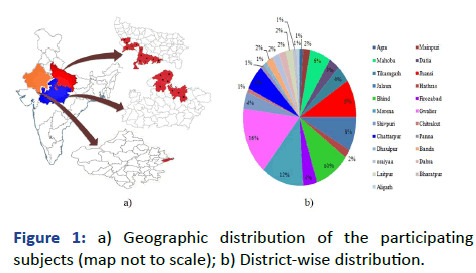
Figure 1: a) Geographic distribution of the participating
subjects (map not to scale); b) District-wise distribution.
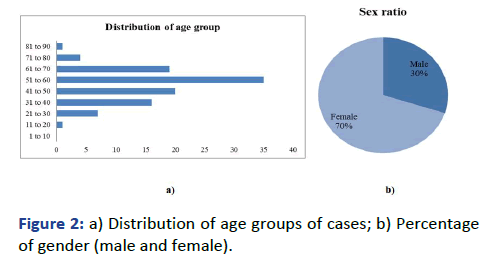
Figure 2: a) Distribution of age groups of cases; b) Percentage
of gender (male and female).
| Gender |
No. of tumors |
Mean ± SE (Size of tumor in cm) |
S.D. |
C.I. of mean |
Range (cm) |
Max to Min (cm) |
Median (cm) |
25% percentile |
75% percentile |
| Female |
32 |
1.5 ± 0.200 |
0.728 |
0.904 |
1.9 |
2.3 to 0.4 |
1.8 |
1 |
1.925 |
| Male |
17 |
1.3 ± 0.326 |
0.283 |
2.541 |
0.4 |
1.5 to 1.1 |
1.3 |
1.1 |
1.5 |
Table 2: Details of tumors/mass in gallbladder.
| |
Cases |
Controls |
| N |
% |
N |
% |
| Age class |
| 1 to 20 |
02/103 |
1.94 |
03/50 |
6.00 |
| 21 to 40 |
22/103 |
22.54 |
32/50 |
64.00 |
| 041 to 60 |
55/103 |
53.92 |
13/50 |
26.00 |
| 61 to 80 |
23/103 |
22.54 |
02/50 |
4.00 |
| 81 to 90 |
01/103 |
0.98 |
00/50 |
0.00 |
| Education |
| Illiterate |
52/103 |
50.49 |
00/50 |
0.00 |
| Primary |
23/103 |
22.33 |
01/50 |
2.00 |
| Secondary |
21/103 |
20.39 |
02/50 |
4.00 |
| Sr. secondary |
02/103 |
1.94 |
09/50 |
38.00 |
| College and above |
05/103 |
4.85 |
38/50 |
76.00 |
| Socio-economic condition |
| Poor |
34/103 |
33.01 |
00/50 |
0.00 |
| Lower middle class |
56/103 |
54.37 |
47/50 |
94.00 |
| Upper middle class |
13/103 |
12.62 |
03/50 |
6.00 |
| Living location |
| Pond |
11/103 |
10.68 |
01/50 |
2.00 |
| Cattle |
32/103 |
31.06 |
00/50 |
0.00 |
| Farming |
12/103 |
11.65 |
00/50 |
0.00 |
| Road |
48/103 |
46.61 |
49/50 |
98.00 |
| Living condition |
| Pucca house (Brick house) |
53/90 |
58.98 |
50/50 |
100.00 |
| Kuccha house (Mud house) |
37/90 |
41.11 |
00/50 |
0.00 |
| Toilet |
| Personal |
40/84 |
47.62 |
50/50 |
100.00 |
| Sarvajanik (Public) |
03/84 |
3.57 |
00/50 |
0.00 |
| Open |
41/84 |
48.81 |
00/50 |
0.00 |
Table 3: Demographic details of cases and control subjects.
| Characteristics |
|
Total |
Numbers (%) |
p value |
OR |
95% CI |
RR |
| Breakfast |
Cases |
71 |
53 (74.64%) |
0.133 |
0.479 |
0.183-1.253 |
0.766 |
| Control |
50 |
43 (86%) |
| Tea and coffee |
Cases |
84 |
76 (90.47%) |
0.127 |
0.193 |
0.023-1.598 |
0.684 |
| Control |
50 |
49 (98%) |
| Seasonal vegetables |
Cases |
83 |
76 (91.5%) |
0.164 |
0.221 |
0.026-1.856 |
0.694 |
| Control |
50 |
49 (98%) |
| Leafy vegetables |
Cases |
78 |
71 (91.02%) |
0.295 |
0.422 |
0.084-2.121 |
0.767 |
| Control |
50 |
48 (96%) |
| Iodized salt |
Cases |
79 |
48 (60.75%) |
0.0003 |
0.0988 |
0.028-0.345 |
0.554 |
| Control |
50 |
47 (94%) |
| Fruits |
Cases |
81 |
9 (11.11%) |
0.0001 |
0.0026 |
0.0003-0.020 |
0.157 |
| Control |
50 |
49 (98%) |
| Dry fruits |
Cases |
78 |
29 (37.17%) |
0.0001 |
0.0378 |
0.037-0.132 |
0.404 |
| Control |
50 |
47 (94%) |
| Pickles |
Cases |
84 |
75 (89.28%) |
0.0978 |
0.017 |
0.020-1.384 |
0.672 |
| Control |
50 |
49 (98%) |
| Hot temperature foods |
Cases |
17 |
6 (35.29%) |
0.0121 |
0.0992 |
0.0163-0.603 |
0.417 |
| Control |
13 |
11 (84.61%) |
| Filtered water |
Cases |
41 |
4 (9.75%) |
0.0001 |
0.0349 |
0.01-0.12 |
0.136 |
| Control |
45 |
34 (75.55%) |
Table 4: Parameters found as protective factors between cases and controls.
| Characteristics |
|
Total |
Numbers (%) |
p value |
OR |
95% CI |
RR |
| Smoking |
Cases |
99 |
19 (19.19%) |
0.0185 |
11.637 |
1.510-89.688 |
1.531 |
| Control |
50 |
1 (2%) |
| Tobacco |
Cases |
84 |
25 (29.76%) |
0.0032 |
6.633 |
1.887-23.342 |
1.604 |
| Control |
50 |
3 (6%) |
| Alcohol |
Cases |
87 |
10 (11.49%) |
0.0822 |
6.363 |
0.789-51.276 |
1.487 |
| Control |
50 |
1 (2%) |
| Non-filtered cooking oil |
Cases |
50 |
41 (82%) |
0.0001 |
18.222 |
5.396-61.533 |
2.872 |
| Control |
25 |
5 (20%) |
| Non-iodized salt |
Cases |
79 |
31 (39.24%) |
0.0003 |
10.118 |
2.894-35.368 |
1.805 |
| Control |
50 |
3 (6%) |
| Stale foods |
Cases |
48 |
43 (89.58%) |
0.0001 |
8.6 |
2.922-25.307 |
3.794 |
| Control |
50 |
25 (50%) |
| Cold foods (frozen) |
Cases |
17 |
11 (64.7%) |
0.012 |
10.083 |
1.657-61.332 |
2.397 |
| Control |
13 |
2 (15.38%) |
Table 5: Parameters found as risk factors between cases and controls.
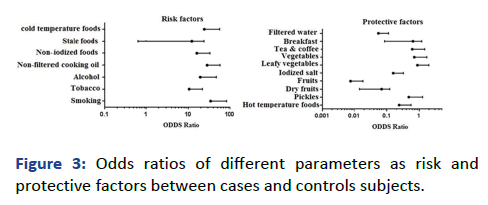
Figure 3: Odds ratios of different parameters as risk and
protective factors between cases and controls subjects.
Liver Function Test Profile
The levels of total bilirubin, direct bilirubin, albumin, SGOT,
SGPT and ALP were elevated in all pathological conditions of
the gallbladder, i.e., GBC, GS, CC, and GBCS, compared to the
control subjects. Elevated levels of total bilirubin (p<0.009),
direct bilirubin (p<0.009), albumin (p<0.009), SGOT (Serum
Glutamic Oxaloactetic Transaminase) (p<0.009), SGPT (Serum
Glutamic Pyruvic Transaminase) (p<0.009) and ALP (Alkaline
Phosphatase) (p<0.009) were also observed in GBC. In the
case of GS, significantly elevated values of total bilirubin
(p<0.012), direct bilirubin (p<0.012), albumin (p<0.012), and
ALP (p<0.012) were observed significantly elevated. In CC,
significantly increased levels of albumin (p<0.003), SGOT
(p<0.003) and SGPT (p<0.003) direct bilirubin, and direct
sugar were observed. In the case of GBCS, random sugar
(p<0.004) and ALP (p<0.004) levels were found elevated as
compared to normal values. A remarkable increase in ALP,
SGPT and SGOT levels were observed in GBC (Figures 4 and 5).
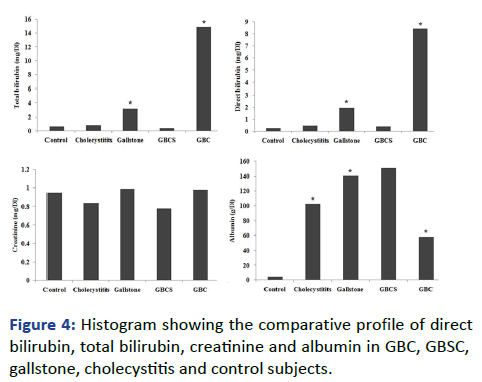
Figure 4: Histogram showing the comparative profile of direct
bilirubin, total bilirubin, creatinine and albumin in GBC, GBSC,
gallstone, cholecystitis and control subjects.
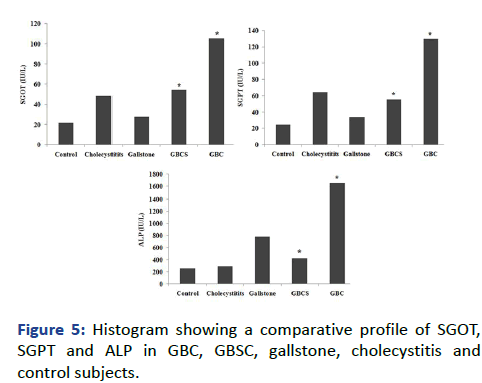
Figure 5: Histogram showing a comparative profile of SGOT,
SGPT and ALP in GBC, GBSC, gallstone, cholecystitis and
control subjects.
Hemogram Test Profile
The levels of platelets, monocytes, Haemoglobin (Hb),
lymphocytes, eosinophils, lymphocytes and neutrophils were
found to decrease in all pathological conditions of the
gallbladder, including GBC, GS, CC, and GBCS. In GBC,
significantly decreased levels of platelets (p<0.001), monocytes
(p<0.001), Hb (p<0.001), and lymphocytes (p<0.001) were
noted, whereas, basophils (p<0.001) were found to be
significantly increased. In GS also, the levels of basophils
(p<0.0013), platelets (p<0.0013), eosinophils (p<0.0013),
monocytes (p<0.0013) and neutrophils (p<0.0013) were
observed significantly low. In CC too, significantly decreased
levels of platelets (p<0.001), eosinophils (p<0.001), monocytes
(p<0.001), and lymphocytes (p<0.001) were observed. In cases
of GBCS, the levels of eosinophils (p<0.004), and platelets
(p<0.004) were observed at lower levels. TLC (p<0.004) was
found to increase in all pathological cases, from CC to GBC.
Moreover, the per cent of neutrophils was found gradually
increase, from CC to GS to GBC (Figures 6 and 7).
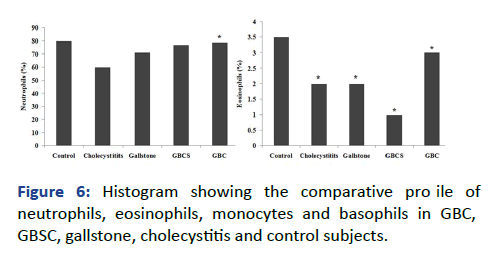
Figure 6: Histogram showing the comparative pro ile of
neutrophils, eosinophils, monocytes and basophils in GBC,
GBSC, gallstone, cholecystitis and control subjects.
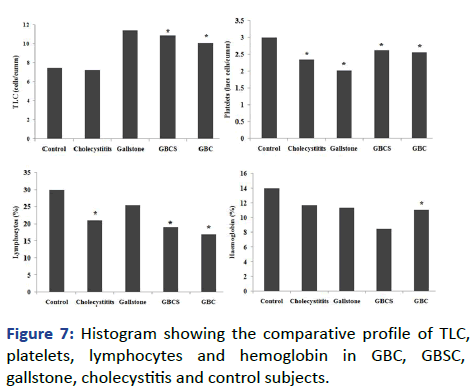
Figure 7: Histogram showing the comparative profile of TLC,
platelets, lymphocytes and hemoglobin in GBC, GBSC,
gallstone, cholecystitis and control subjects.
Discussion
The present case-control study provides significant
information on the possible protective and risk factors for
GBC and GBD. Out of all cases, females (70%) were more in
number compared to males (30%). Earlier studies have also
reported the incidence of GBC to be high in females than in
males [14]. We observed that middle-aged married women
usually do not have proper food habits, especially meal
timings. Inadequate and impure water intake could be a major
cause of stone formation. Cholesterol stones are mainly found
in most gallstone cases [15-20]. Adequate water intake
increases the solubility of cholesterol with bile salt. If there is
an imbalance between these bile salts and cholesterol, then
the bile fluid turns into sludge. Impure water contains very
fine stones and pebbles that may cause the solid stones [21].
In some of the studies, subjects (patients) were also found
suffering from diabetes, typhoid fever, non-Hodgkin’s
lymphoma, acute pancreatitis, jaundice, and gastric problems.
The predisposition of cancer is supposed to be a strong risk
factor that may trigger the development of GBC. In our study,
we noted the maximum number of masses to be present in
the fundus region of the gallbladder. Most (>80%) the
gallbladder cancers are adenocarcinomas that originate from
fundus (60%), body (30%), or neck (10%).
Case-control Study of Life Styles
GBC is highly malignant, and there are both genetic as well as
environmental factors that contribute to it. A gradual increase
in the mortality rate of GBC is observed. We, therefore, need
to execute advanced diagnostic and preventive strategies for
reducing mortality rates. The foremost step towards this is the
identification of the associated protective and risk factors.
The present study revealed many factors related to food
habits to be protective for GBC, which suggested that
seasonal fruits, dry fruits, filtered water, iodized salt and
freshly cooked foods may be playing a significant protective
role in GBC. An earlier study carried out in Japan reported
that intake of fruits and vegetables reduces the risk of biliary tract cancer [22]. Our finding is in corroboration with another
report also, where the regular intake of fruits and vegetables
was suggested to prevent the risk of GBC [23]. The plants
consist of phytochemicals like phenolic compounds (catechin,
quercetin, gallic acid and cyanidin) and also flavonoids are
present among the indigenous tropical fruits which playpotent
a role as antioxidants. The phytochemicals provide
anti-inflammatory and antimicrobial effects and protection
against cancer [24]. Some factors, like tea and coffee,
seasonal vegetables, leafy vegetables, having breakfast and
pickles were also identified as protective factors for GBC;
however, these findings did not appear statistically significant.
Tea was previously reported, to be a protective factor for GBC
and carries antioxidant, which provide protection against
cancer [25,26]. While coffee drinkers showed a low risk of
GBC in Japan. Most individuals do not take fruits on a daily
basis, but only occasionally, and this may contribute to the
development of the disease. In the Chilean population, it was
found that a low intake of fresh fruits has an association with
GBC [27]. In our study, we found that excluding fruits from the
diet could be a significant factor contributing to the
development of cancer/stone/cholecystitis. It is claimed that
vegetables, especially of the cruciferous family, and fruits
have a significant protective role. High consumption of
vegetables is shown to be associated with alimentary tract
cancer [28]. Our analysis also revealed that having regular and
timely breakfast could be a protective factor in GBC. Breakfast
fills up the gap between the meals, which decreases the
contact time of bile with the mucosa of the gallbladder. It was
observed that GBC patients often do not follow this specific
habit. Most of them merged breakfast and lunch. Poor water
intake is definitely an important risk factor towards
developing gallstone diseases, followed by gallbladder cancer.
In most cases, water is taken directly from the well or hand
pump, which is not properly filtered. A detailed list of
associated factors is given in Table 1. We also investigated
many other presumed risk factors, like socioeconomic
condition, living status, diet, tobacco, alcohol, smoking, etc.,
which may be related to environmental influences. Various
clinical parameters or factors like Liver Function Tests (LFT)
and hemograms were also studied. We observed 70% of
patients to be female. Several other studies from India also
support this, female, are more prone to GBC [29]. Our study
also covered the living conditions of most GBC patients, which
revealed that maximum patients were from low and middle
socioeconomic groups, illiterate, unaware of health-related
issues and located in odd places (such as livestock, industrial
region, near roads or ponds, etc.). These are likely to act as
other potential risk factors for GBC. Most of the patients used
open toilets, which could lead to susceptibility to unhygienic
conditions, including bacterial infections, such as Helicobacter
pylori and Salmonella typhii, which are reported as potential
risk factors for GBC. Rural areas have shown a high risk of
Helicobacter pylori infection than urban [30-32]. Diet habits
and lifestyles also play an important role in the risks of GBC
[33]. Smokers being at a higher risk for GBC was also
suggested by previous studies [34]. Tobacco chewing has also
been found to be a highly significant risk factor for GBC or
associated with increased risk of it, since nicotine triggers mutagenesis in the genome, which can lead to tumorigenesis.
The smoke of tobacco contains several toxic chemicals that
may have detrimental effects on the gallbladder [35,36].
Tobacco smoking increased the GBC risk and in the case of
diabetes, even a small amount of smoking increased GBC risk
in individuals [37]. Alcohol consumption was also found to be
a risk factor for GBC, however previous studies were
paradoxical with regard to the effect of alcohol on GBC [38].
Furthermore, certain additives in foods, such as non-filtered
cooking oil, non-iodized salt, stale foods and the habit of
consuming cold (frozen) foods were found to be significant
risk factors for GBC as revealed by our study. Consumption of
stale food has been associated as a risk factor for cancer [39].
An earlier study from Japan showed an increased risk of
biliary tract cancer [40]. The non-filtered mustard oil
consumed by GBC patients is likely to be adulterated with
some carcinogens. In north India, mostly non-filtered mustard
oil is consumed, which is suggested to be mixed with
carcinogenic impurities. This may also be considered an
etiological factor for GBC.
LFT in Gallbladder Diseases
Several GBC patients possessed increased levels of total
bilirubin, direct bilirubin, albumin and SGOT. SGPT and ALP
were significantly elevated. Albumin, SGOT and SGPT values
were found to be exceeding the normal range in CC. Total
bilirubin, direct bilirubin, albumin and ALP values were also
found to be elevated in gallstones patients. On the contrary,
the random sugar levels were below the normal range, but
SGOT and SGPT were observed to be normal. SGOT and SGPT
are the aminotransferase enzymes, which catalyze the
chemical reactions involving the amino acids, where an amino
group is transferred from the donor amino acid to the
recipient molecule. During any tissue damage, these are
released into the bloodstream. The dysfunction of the liver or
gallbladder or the simultaneous effect of these organs trigger
to release of biochemical enzymes. The patients with
gallstones with GBC had elevated values of SGPT, SGOT, ALP
and random sugar but total bilirubin, direct bilirubin, and
albumin were found to be normal. Our present findings
validate a previous study by Singh, et al. [41].
Hemogram in GBC and GBD
From the hematological observation, we found hemoglobin to
be slightly lower in the case of GBC, whereas, GBCS showed a
marked low percentage of Hb compared to the normal range
of control subjects. All other cell types, such as neutrophils,
basophils, eosinophils, lymphocytes, leukocytes, and platelets
were in the normal range. This may also be due to the fact in
our study that most of the subjects are females, and most of
the females showed a low percentage of Hb.
Conclusion
Our analysis revealed that taking seasonal fruits, dry fruits
and filtered water in adequate amounts, and using iodized
salt might be developed strong protection against GBC and GBD, whereas, the use of stale food, non-filtered cooking oil,
non-iodized salt, chewing tobacco and consuming alcohol are
the major risk factors for GBC and GBD. Increasing awareness
of people on these factors may provide aid in the
management and prevention of gallbladder cancer. Further
studies by increasing the sample size may reveal more
conclusive results.
Disclosure of potential conflicts of interest
The authors declare no conflict of interests.
Acknowledgement
We greatly acknowledge the Madhya Pradesh Council of
Science and Technology (MPCST), M.P. for financial support to
Dr. P.K. Tiwari through a research grant to carry out this work.
Shushruta Bhunia acknowledges MPCST and Jiwaji University
for providing fellowship. We are also thankful to Dr. Sanjiv
Gupta and Dr. Dinesh Singh Tekcham for their useful
comments on the manuscript and to the patients and their
family members for their active support during questionnaire
based data collection.
References
- Hu ZI, Lim KH (2022) Evolving paradigms in the systemic treatment of advanced gallbladder cancer: Updates in year 2022. Cancers. 14(5):1249.
[Crossref] [Google Scholar] [PubMed]
- Strom BL, Soloway RD, Rios-Dalenz JL, Rodriguez-Martinez HA, West SL, et al. (1995) Risk factors for gallbladder cancer. An international collaborative case-control study. Cancer. 76(10):1747-1756.
[Crossref] [Google Scholar] [PubMed]
- Pandey M, Shukla VK (2002) Diet and gallbladder cancer: A case-control study. Eur J Cancer Prev. 11(4):365-368.
[Crossref] [Google Scholar] [PubMed]
- Kai K, Aishima S, Miyazaki K (2014) Gallbladder cancer: Clinical and pathological approach. World J Clin Cases. 2(10):515-521.
[Crossref] [Google Scholar] [PubMed]
- Sharma JD, Kalit M, Nirmolia T, Saikia SP, Sharma A, et al. (2014) Cancer: Scenario and relationship of different geographical areas of the globe with special reference to North East-India. Asian Pac J Cancer Prev. 15(8):3721-3729.
[Crossref] [Google Scholar] [PubMed]
- Barbhuiya MA, Singh TD, Gupta S, Shrivastav BR, Tiwari PK (2009) Incidence of gall bladder cancer in rural and semiurban population of north central India: A first insight. Internet J Epidemiol. 7(2):1820-2155.
[Google Scholar]
- Barbhuiya MA, Singh TD, Poojary SS, Gupta S, Kakkar M, et al. (2015) Gallbladder cancer incidence in Gwalior district of India: Five years trend based on the registry of a regional cancer center. Indian J Cancer. 52(3):430-437.
[Crossref] [Google Scholar] [PubMed]
- Hundal R, Shaffer EA (2014) Gallbladder cancer: Epidemiology and outcome. Clin Epidemiol. 6:99-109.
[Crossref] [Google Scholar] [PubMed]
- Randi G, Franceschi S, La Vecchia C (2006) Gallbladder cancer worldwide: Geographical distribution and risk factors. Int J Cancer. 118(7):1591-1602.
[Crossref] [Google Scholar] [PubMed]
- Kumari N, Corless CL, Warrick A, Beadling C, Nelson D, et al. (2014) Mutation profiling in gallbladder cancer in Indian population. Indian J Pathol Microbiol. 57(1):9-12.
[Crossref] [Google Scholar] [PubMed]
- Stinton LM, Shaffer EA (2012) Epidemiology of gallbladder disease: Cholelithiasis and cancer. Gut Liver. 6(2):172-187.
[Crossref] [Google Scholar] [PubMed]
- Kumar JR, Tewari M, Rai A, Sinha R, Mohapatra SC, et al. (2006) An objective assessment of demography of gallbladder cancer. J Surg Oncol. 93(8):610-614.
[Crossref] [Google Scholar] [PubMed]
- Perez-Moreno P, Riquelme I, Garcia P, Brebi P, Roa JC (2022) Environmental and lifestyle risk factors in the carcinogenesis of gallbladder cancer. J Pers Med. 12(2):234.
[Crossref] [Google Scholar] [PubMed]
- Alkhayyat M, Abou Saleh M, Qapaja T, Abureesh M, Almomani A, et al. (2021) Epidemiology of gallbladder cancer in the Unites States: A population-based study. Chin Clin Oncol. 10(3):25.
[Crossref] [Google Scholar] [PubMed]
- Wang HH, Portincasa P, Afdhal NH, Wang DQ (2010) Lith genes and genetic analysis of cholesterol gallstone formation. Gastroenterol Clin North Am. 39(2):185-207.
[Crossref] [Google Scholar] [PubMed]
- Jaruvongvanich V, Sanguankeo A, Upala S (2016) Significant association between gallstone disease and nonalcoholic fatty liver disease: A systematic review and meta-analysis. Dig Dis Sci. 61(8):2389-2396.
[Crossref] [Google Scholar] [PubMed]
- Shabanzadeh DM, Holmboe SA, Sorensen LT, Linneberg A, Andersson AM, et al. (2017) Are incident gallstones associated to gender dependent changes with age? A cohort study. Androl. 5(5):931-938.
[Crossref] [Google Scholar] [PubMed]
- Idowu BM, Onigbinde SO, Ebie IU, Adeyemi MT (2019) Gallbladder diseases in pregnancy: Sonographic findings in an indigenous African population. J Ultrason. 19(79):269-275.
[Crossref] [Google Scholar] [PubMed]
- Grigoreva IN, Romanova TI (2020) Gallstone disease and microbiome. Microorganisms. 8(6):835.
[Crossref] [Google Scholar][PubMed]
- Granel-Villach L, Gil-Fortuno M, Fortea-Sanchis C, Gamon-Giner RL, Martinez-Ramos D, et al. (2020) Factors that influence bile fluid microbiology in cholecystectomized patients. Rev Gastroenterol Mex (Engl Ed). 85(3):257-263.
[Crossref] [Google Scholar] [PubMed]
- van Erpecum KJ (2005) Biliary lipids, water and cholesterol gallstones. Biol Cell. 97(11):815-822.
[Crossref] [Google Scholar] [PubMed]
- Kato K, Akai S, Tominaga S, Kato I (1989) A case-control study of biliary tract cancer in Niigata Prefecture, Japan. Jpn J Cancer Res. 80(10):932-938.
[Crossref] [Google Scholar] [PubMed]
- Pandey M, Shukla M, Shukla V (2008) Diet and gallbladder cancer. Indian J Med Paediatr Oncol. 29(01):6-7.
[Google Scholar]
- Khoo HE, Azlan A, Kong KW, Ismail A (2016) Phytochemicals and medicinal properties of indigenous tropical fruits with potential for commercial development. Evid Based Complement Alternat Med. 2016:7591951.
[Crossref] [Google Scholar] [PubMed]
- Tyagi BB, Manoharan N, Raina V (2008) Risk factors for gallbladder cancer: A population based case-control study in Delhi. Indian J Med Paediatr Oncol. 29(01):16-26.
[Google Scholar]
- Zatonski WA, La Vecchia C, Przewozniak K, Maisonneuve P, Lowenfels AB, et al. (1992) Risk factors for gallbladder cancer: A polish case-control study. Int J Cancer. 51(5):707-711.
[Crossref] [Google Scholar] [PubMed]
- Serra I, Yamamoto M, Calvo A, Cavada G, Baez S, et al. (2002) Association of chili pepper consumption, low socioeconomic status and longstanding gallstones with gallbladder cancer in a Chilean population. Int J Cancer. 102(4):407-411.
[Crossref] [Google Scholar] [PubMed]
- Moerman CJ, de Mesquita HB, Smeets FW, Runia S (1995) Consumption of foods and micronutrients and the risk of cancer of the biliary tract. Prev Med. 24(6):591-602.
[Crossref] [Google Scholar] [PubMed]
- Shukla VK, Chauhan VS, Mishra RN, Basu S (2008) Lifestyle, reproductive factors and risk of gallbladder cancer. Singapore Med J. 49(11):912-915.
[Google Scholar] [PubMed]
- Mishra RR, Tewari M, Shukla HS (2011) Helicobacter pylori and pathogenesis of gallbladder cancer. J Gastroenterol Hepatol. 26(2):260-266.
[Crossref] [Google Scholar] [PubMed]
- Tewari M, Mishra RR, Shukla HS (2010) Salmonella typhi and gallbladder cancer: Report from an endemic region. Hepatobiliary Pancreat Dis Int. 9(5):524-530.
[Google Scholar] [PubMed]
- Ueda M, Kikuchi S, Kasugai T, Shunichi T, Miyake C (2003) Helicobacter pylori risk associated with childhood home environment. Cancer Sci. 94(10):914-918.
[Crossref] [Google Scholar] [PubMed]
- Zatonski WA, Lowenfels AB, Boyle P, Maisonneuve P, de Mesquita HB, et al. (1997) Epidemiologic aspects of gallbladder cancer: A case-control study of the search program of the international agency for research on cancer. J Natl Cancer Inst. 89(15):1132-1138.
[Crossref] [Google Scholar] [PubMed]
- McMichael AJ, Baghurst PA, Scragg RK (1992) A case-control study of smoking and gallbladder disease: Importance of examining time relations. Epidemiol. 3(6):519-522.
[Crossref] [Google Scholar] [PubMed]
- Wenbin D, Zhuo C, Zhibing M, Chen Z, Ruifan Y, et al. (2013) The effect of smoking on the risk of gallbladder cancer: A meta-analysis of observational studies. Eur J Gastroenterol Hepatol. 25(3):373-379.
[Crossref] [Google Scholar] [PubMed]
- Aune D, Vatten LJ and Boffetta P (2016) Tobacco smoking and the risk of gallbladder disease. Eur J Epidemiol. 31(7):643-653.
[Crossref] [Google Scholar] [PubMed]
- Park JH, Hong JY, Han K (2022) The dose response association between smoking and the risk of gallbladder cancer differs by glycemic status: A nationwide cohort study. 1-24.
[Google Scholar]
- Khan ZR, Neugut AI, Ahsan H, Chabot JA (1999) Risk factors for biliary tract cancers. Am J Gastroenterol. 94(1):149-152.
[Crossref] [Google Scholar] [PubMed]
- Dorzhgotov B (1989) Risk factors in the manifestations of the 5 principal forms of cancer in the people's republic of Mongolia. Sante Publique (Bucur). 32(4):361-367.
[Google Scholar] [PubMed]
- Hai AA, Sinha DN, Shah SC (1994) Carcinoma gallbladder-possible aetiology. Proceedings of the XVI International Cancer Congress. MonduzziEditore. 20:69-72.
- Singh TD, Barbhuiya MA, Poojary S, Shrivastav BR, Tiwari PK (2012) The liver function test enzymes and glucose level are positively correlated in gallbladder cancer: A cancer registry data analysis from north central India. Indian J Cancer. 49(1):125-136.
[Crossref] [Google Scholar] [PubMed]
Citation: Mishra SK, Bhunia S, Singh J, Shrivastav BR, Tiwari PK (2023) Assessment of Dietary Habit Associated with Gallbladder
Cancer and Gallbladder Diseases: A Case-control Study. J Cancer Epidemiol Prev. 8:017
Copyright: © 2023 Mishra SK, et al. This is an open-access article distributed under the terms of the Creative
Commons Attribution License, which permits unrestricted use, distribution, and reproduction in any medium, provided
the original author and source are credited.
